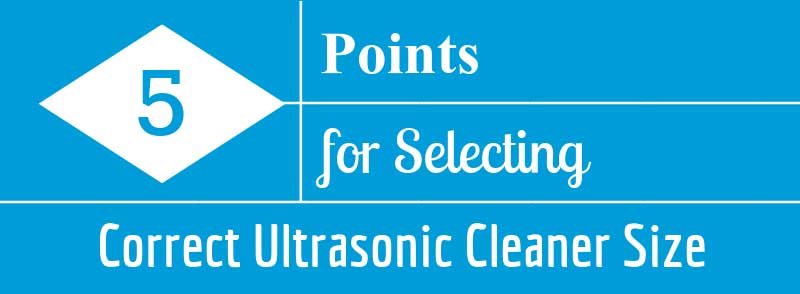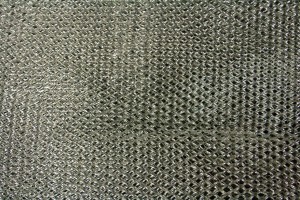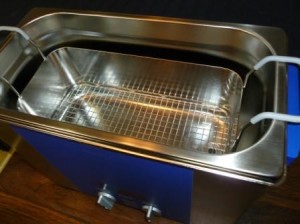Posts Tagged ‘industrial ultrasonic cleaner’
5 Key Points to Selecting the Correct Ultrasonic Cleaner Size
Ultrasonic parts cleaners are manufactured in a tremendous variety of sizes. By “size” we mean the dimensions and capacities of tanks in which ultrasonic parts cleaning is accomplished. For example the Elmasonic E Plus series is offered in 9 tank capacities from 0.25 to 7.5 gallons and the Select Series in 11 capacities from 0.7 to 23 gallons. Industrial-sized units such as SHIRACLEAN can hold 100 gallons or more. This post will help you select the correct ultrasonic parts cleaner size.
Five Points to Selecting your Ultrasonic Parts Cleaner Size
Here are the key points to consider:
- Parts you are cleaning
- Cleaning tank dimensions
- The importance of “working depth”
- The role of cleaning baskets
- Cleaning solution volume and service volume
1. What Parts are you Cleaning?
Ultrasonic parts cleaning has proved a very effective and economical way to remove all types of contaminants from nearly anything that can be safely … Read the rest
Explosion Proof Ultrasonic Cleaner Options
Explosion-proof ultrasonic cleaners must be used when cleaning tasks call for the use of volatile solvents to achieve the desired results. See examples below. When low flash point flammable solvents are involved in an ultrasonic cleaning operation, a number of precautions are called for in addition to using an explosion-proof ultrasonic cleaner. This is because using these solvents creates what the NEC and NFPA term a hazardous location.
A flash point is the temperature at which a particular organic compound gives off sufficient vapor to ignite in air when given an ignition source. In view of this, selection of an ultrasonic cleaner must take into account that not only do volatile solvents evaporate, but the heat generated by the ultrasonic cleaning process accelerates solvent evaporation and vapor generation.… Read the rest
Maximize Performance of your Ultrasonic Bath
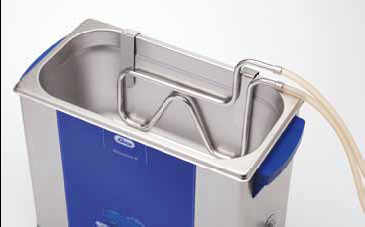
If you have invested in an ultrasonic bath you have an appreciation of how these units contribute to fast, safe and efficient removal of contaminants from virtually any product that can be safely wetted in a biodegradable ultrasonic bath. In this post we provide recommendations on maximizing the performance of your ultrasonic bath, thereby contributing to the efficiency of your ultrasonic cleaning operations.
Points covered include:
- Selecting the correct cleaning bath chemistry
- Cleaning time and cleaning temperature
- Tips on extending the effective life of ultrasonic baths
Ultrasonic Cleaning Bath Chemistry
There is a wide variety of formulations available to support ultrasonic cleaning operations. Some manufacturers term these ultrasonic cleaning solutions, others use an overall category called soaps. One can’t argue with that because using soaps conjures up images of cleaning, whether in the car wash, clothes washer or shower.
Regardless of nomenclature, these formulations are designed to perform specific cleaning … Read the rest
How to Select Ultrasonic Cleaner Accessories
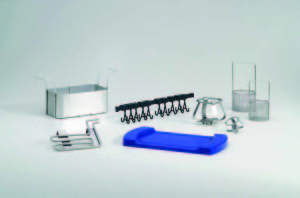
Think of selecting ultrasonic cleaner accessories as though you are buying a new car. You have the choice of standard equipment and equipment or features that are “optional at extra cost.”
The “options” largely depend on the ultrasonic cleaner manufacturer. This is why it is important for you to have a clear understanding of what you want to accomplish in your ultrasonic cleaning process. Our post on ultrasonic cleaner application ideas provides a good tutorial on this.
This post is designed to help you select ultrasonic cleaning accessories that are either required to help you quickly and successfully accomplish your ultrasonic cleaning tasks or simply “nice to have.”
Similarly this post does not go into detail on selecting a specific ultrasonic cleaner. That is generally based on the size of your operations and what you intend to do with the equipment. We cover this topic in … Read the rest
Ultrasonic Cavitation vs. Air in an Ultrasonic Cleaner
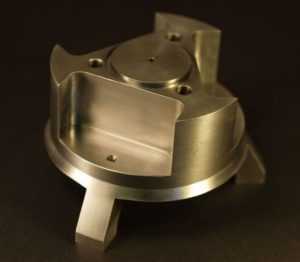
Ultrasonic cleaning procedures described in our posts nearly always call attention to the importance of degassing fresh cleaning solutions. Degassing is the process of removing trapped air in liquids. You can see this by letting a glass of water stand for awhile and note the bubbles that appear on the inside surface. Trapped, entrained or dissolved, air inhibits cavitation, which is the implosion of micron-size vacuum bubbles that accomplish the cleaning.
Simply operating the equipment for a time, the length of which depends on the volume of cleaning solution, will drive off trapped air. The process can be hastened by a Degas mode on an ultrasonic cleaner. It does the job by switching on and off causing air bubbles to coalesce and allowing them rise to the surface and burst.
Removing Other Air in an Ultrasonic Cleaner
Air can be introduced into … Read the rest
Reclaim Industrial Filters in an Ultrasonic Cleaner
Google industrial filters and you’ll get about 12.5 million results. Narrow it down to industrial metal mesh filters and the count is just over 1 million. The point: industrial filters are a big business to trap and hold airborne particles such as dust and grease. Other filters are used to strain impurities from water and chemicals. As with your air conditioner filters and your automobile fuel and oil filters particles build up, flow becomes restricted, and eventually filters must be changed.
Frequent filter replacement represents an expense that can be reduced by reclaiming industrial filters in a sonic cleaner. Reclaiming becomes increasingly attractive as replacement cycles shorten or when filters are expensive. Another benefit of reclaiming is that fewer filters wind up in a landfill.
Why Ultrasonic Filter Cleaning Works Best
High-pressure jets of hot water may be used to … Read the rest
Ultrasonic Cleaning Systems for Precision Optics
Specifying ultrasonic cleaning systems for precision optics requires close collaboration between optics manufacturers establishing optical cleaning requirements and engineers at firms supplying the equipment and chemicals to fulfill those requirements. It is not the intent of this post to specify cleaning equipment and procedures. Instead it’s our objective to provide an overview of Elmasonic equipment for cleaning ophthalmic optics.
And a wide range of equipment it is – ranging from individual cleaning tanks to fully automated multi-stage wash-rinse-dry cleaning lines in a clean room. We’ll briefly describe cleaning chemicals formulated for specific functions from mold manufacturing to cleaning for inspection and cleaning for coating.
Other equipment supporting cleaning optics includes water treatment plants, filtration systems, solvent treatment plants and laminar air flow modules to support clean rooms.
Our role, other than to provide these introductions to equipment and chemicals, is to put you in touch with equipment specialists for cleaning … Read the rest
Deionized Water Rinsing after Ultrasonic Cleaning
We’ll start this post by stating that it is not always necessary to rinse products after ultrasonic cleaning. Engine parts such as gears and carburetors are examples where cleaning solution residues may be tolerable. If not, then rinsing cleaned parts with fresh water should usually suffice. There are other areas, however, where thorough rinsing is essential and where deionized water rinsing after ultrasonic cleaning is strongly recommended.
These are applications where the slightest bit of remaining contaminants or cleaning solution residues can impact performance. Electronic components such as printed circuit boards, optics, and medical and surgical instruments, are examples. These are applications where spot-free drying is the goal, and in this context “spots” relate to dissolved minerals in regular water that remain as residues when the water evaporates.
Removing dissolved minerals in water is generally accomplished by two methods. Deionization is a process that produces deionized water (DI water) by … Read the rest
Ultrasonic Cleaner Operating Tips
New ultrasonic cleaners are usually shipped with operating instructions. These may be misplaced. If you purchase a used sonic cleaner the manual may not be included. Improperly using this equipment can quickly damage it, which is why we’re presenting this post on ultrasonic cleaner operating tips. They are not in order of importance because all are important.
These tips are not comprehensive but they do cover a majority of cases. If you have questions please contact us whether or not we supplied the unit.
Cleaning Baskets
Parts being cleaned should never be in contact with the ultrasonic cleaner tank. Why? The ultrasonic vibrations caused by transducers mounted to the tank will cause parts to wear against the tank surface. Eventually this may result in a leak. Instead position what you are cleaning in parts baskets that are designed to fit the tank. … Read the rest
Sonic Cleaning Solves 3D Printing Mold Support Challenge
3D printing, also called fused deposition modeling and fused filament fabrication, has revolutionized and lowered the cost of traditional molding techniques such as the lost wax process. By using two moldable thermoplastic formulations such as ABS for the part itself and PLA for removable mold supports 3-D printing is capable of quickly producing highly complex configurations.
A key to the efficiency of the process is fast, safe removal of the PLA mold support without risking damage to the ABS part. An ultrasonic cleaner is proven far faster, safer and more effective than water sprays or manual scrubbing.
3-D Printing in Brief
Computer aided design files for components are programmed into the 3D printer which uses thermoplastic filaments to create components by successively building up extremely thin layers of plastic. The ABS filament ends up as the product; the PLA filament, deposited at the same time, serves as a support for … Read the rest
